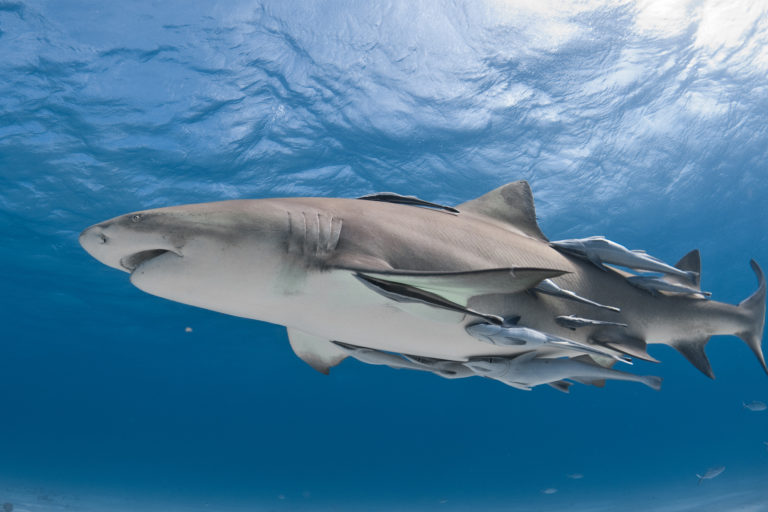Can the world’s greatest coral reef system be rescued from the rapid march of the climate crisis?
With global temperatures already about 1C higher than pre-industrial levels, Queensland’s Great Barrier Reef has been through three mass bleaching events in only five years.
Corals are dying and the system is changing rapidly as temperatures keep going up and greenhouse gases keep accumulating in the atmosphere.
Earlier this week, the Australian government revealed a $150m research and development program to build the reef’s resilience to future warming.
Ken Anthony, a principal research scientist at the Australian Institute of Marine Science, said: “It’s a bit like the Apollo 11 mission. It really is on that scale. We have to be able to look Australians in the eye in in 10 years’ time and say that in the time we had, we did our best.”
On its own, the project – called the Reef Restoration and Adaptation Program – is a clear signal that scientists now know cutting greenhouse gas emissions will not be enough to sustain a vibrant reef.
It’s time for intervention at a scale never seen before, scientists say, and they’re in a race against time to find enough solutions before climate change bites even harder.
Some 43 concepts are being backed under the plan, from futuristic cloud brightening to using concrete blocks to stabilise damaged reefs.
The program has split the concepts into seven groups and scientists say none of them will be enough in isolation – it’s more likely that a combination deployed at different scales will give the reef the best chance. These seven categories fall broadly into three approaches:
Shading and cooling reefs to cut sunlight or lower ocean temperatures;
Stabilising and rebuilding reef structures damaged from bleaching, cyclones or ocean acidification;
Helping corals adapt to warmer temperatures and then moving their larvae around en masse.
So what’s being planned, and could these approaches really buy the reef enough time?
Shading and cooling the Great Barrier Reef
In early March, Daniel Harrison, a biological oceanographer at Southern Cross University, led a trial of equipment that sprays trillions of nano-sized salt crystals into the air.
The idea is the salt crystals reach existing low-level clouds and, because of their tiny size, encourage the formation of smaller cloud droplets that reflect more sunlight than larger droplets.
The process mirrors what happens over the oceans every day as winds carry salty ocean spray into the air to help form clouds.
Harrison is leading a project to try to scale-up the trial to see if clouds over hundreds of kilometres could be brightened. If this was possible, the brightening effect could slightly lower ocean temperatures below – perhaps keeping corals just cool enough to prevent them from bleaching.
Such a system could be turned on and off quickly, and could be deployed when weather forecasts and models show that corals are under dangerous levels of heat stress.
Harrison, who is leading the cooling and shading efforts under the government program, says: “It’s a combination of light and temperature that causes corals to bleach.

“We are pursuing the things that are really big in scale, but also looking at small scale actions that could support outcomes on a local level at high value reef sites.”
Other methods under this “shading and cooling” category include machines to create artificial low-hanging sea fog that could provide shade over smaller areas. Researchers are also looking at ultra-thin reflective films that could temporarily cut the sunlight over small areas.
“This is a race against time,” he said. “If we can go really hard on emissions and meet or beat the Paris [climate] targets, then these interventions have the potential to help get the reef to a sustainable future – but only under that very aggressive emissions reduction scenario.”
Stabilising damaged reefs with scaffolding
Anyone who has walked around an ancient Roman city will have seen restorers working behind steel props and scaffolding that hold up what’s left of a once majestic temple or amphitheatre.
Coral bleaching and cyclones can weaken the structure of reefs, known as the substrate. Scientists think that if reefs could be stabilised, it might give other methods a chance to take hold and restore individual reefs.
There are question marks over the economics of deploying mesh or 3D printed frames at scale, but the restoration programs suggest there could be small-scale deployments that could help reefs recover.
Removing natural rubble around reefs could also help create space for new corals to grow, and is another area under investigation.
Modelling for the program found these approaches tended to only be cost effective if emissions in the future were very low. But they could still help at smaller scales.

Anthony says if temperatures stay below 2C “then there is so much we can do” across all the approaches.
“It’s both daunting to look at the challenge ahead, but also we know we have to come up with a plan,” he says.
“At 3C the reef will look very different – it would be a sad story, but you still wouldn’t give up.”
Transporting corals and larvae
Prof Peter Harrison, at Southern Cross University, is a global expert on how coals reproduce and was among the first to discover their mass spawning on just a few nights of the year after full moons.
“It’s like an underwater snowstorm and billions of eggs and sperm get released,” he says.
One approach under development is to find ways to capture larvae during natural spawning and then move them in “slicks” and drop them in places that need help to recover.
Harrison says there is always masses of excess coral larvae that would float away or be eaten and, before the impacts of climate change, “it didn’t matter if 99% [of the larvae] drifted away or got eaten fish, because there were so many of them.”
“Because the production of larvae has been so dramatically impacted because of the mass bleaching, we are now looking to see how we could use what we know about coral reproduction and more effectively transfer them onto damaged reef systems.”
Harrison says methods being researched under the new program include scaling up floating ocean pools to transfer coral larvae, or eggs and sperm raised in aquaculture ponds, onto reefs.
Corals get much of their colour and nutrients from the symbiotic relationship they have with special algae. Harrison says that some corals are more heat tolerant than others, and the same goes for the algae.
Combining heat tolerant algae and heat tolerant corals, and then producing more heat tolerant larvae, could give reefs “more scope for growth under warming conditions”.
“We think we can get an increased tolerance [of corals] of just a few degrees. Ultimately, unless the political leadership round the world enables a realistic approach to managing greenhouse gas emissions and bringing the rate of climate change under control, the system will become so overwhelmed we won’t be able to use these corals.
“We are buying time to help coral species to evolve and adapt and buy enough time to get some real action on climate change. There’s a large group of people around me who feel we can’t wait for action. We have to work out what we can do now.”


